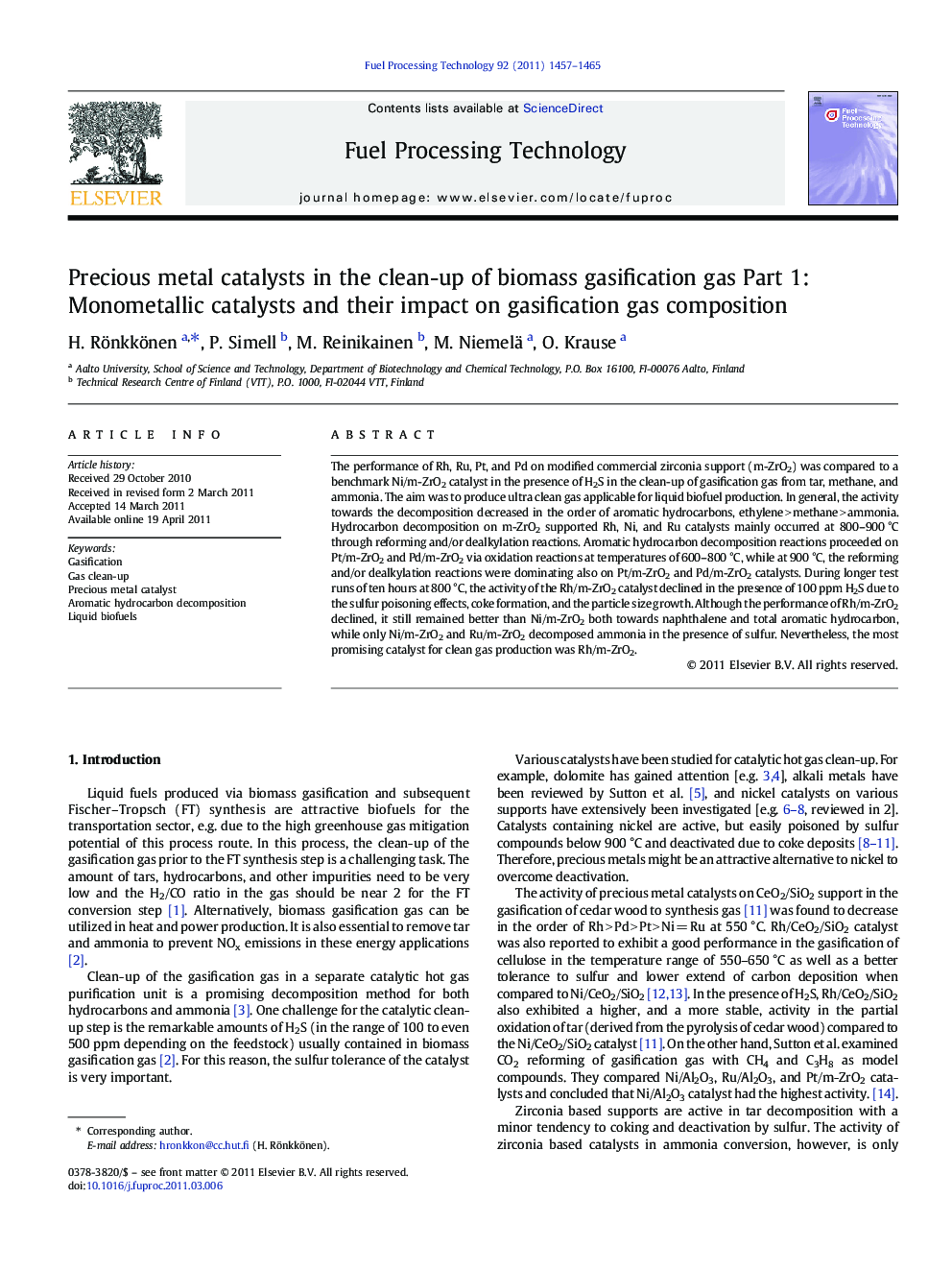| کد مقاله | کد نشریه | سال انتشار | مقاله انگلیسی | نسخه تمام متن |
|---|---|---|---|---|
| 210782 | 461727 | 2011 | 9 صفحه PDF | دانلود رایگان |

The performance of Rh, Ru, Pt, and Pd on modified commercial zirconia support (m-ZrO2) was compared to a benchmark Ni/m-ZrO2 catalyst in the presence of H2S in the clean-up of gasification gas from tar, methane, and ammonia. The aim was to produce ultra clean gas applicable for liquid biofuel production. In general, the activity towards the decomposition decreased in the order of aromatic hydrocarbons, ethylene > methane > ammonia. Hydrocarbon decomposition on m-ZrO2 supported Rh, Ni, and Ru catalysts mainly occurred at 800–900 °C through reforming and/or dealkylation reactions. Aromatic hydrocarbon decomposition reactions proceeded on Pt/m-ZrO2 and Pd/m-ZrO2 via oxidation reactions at temperatures of 600–800 °C, while at 900 °C, the reforming and/or dealkylation reactions were dominating also on Pt/m-ZrO2 and Pd/m-ZrO2 catalysts. During longer test runs of ten hours at 800 °C, the activity of the Rh/m-ZrO2 catalyst declined in the presence of 100 ppm H2S due to the sulfur poisoning effects, coke formation, and the particle size growth. Although the performance of Rh/m-ZrO2 declined, it still remained better than Ni/m-ZrO2 both towards naphthalene and total aromatic hydrocarbon, while only Ni/m-ZrO2 and Ru/m-ZrO2 decomposed ammonia in the presence of sulfur. Nevertheless, the most promising catalyst for clean gas production was Rh/m-ZrO2.
Research Highlights
► We studied several precious metal catalysts in the clean-up of gasification gas.
► Rh, Ru, Pt, and Pd catalysts were compared to a Ni catalyst in the presence of H2S.
► The most promising catalyst in clean-up of the gasification gas was Rh/m-zirconia.
► Hydrocarbons decomposed on Rh, Ni, Ru/m-ZrO2 via reforming, dealkylation reactions.
► Rh was more active than Ni catalyst, during ten hours on stream with 100 ppm H2S.
Journal: Fuel Processing Technology - Volume 92, Issue 8, August 2011, Pages 1457–1465